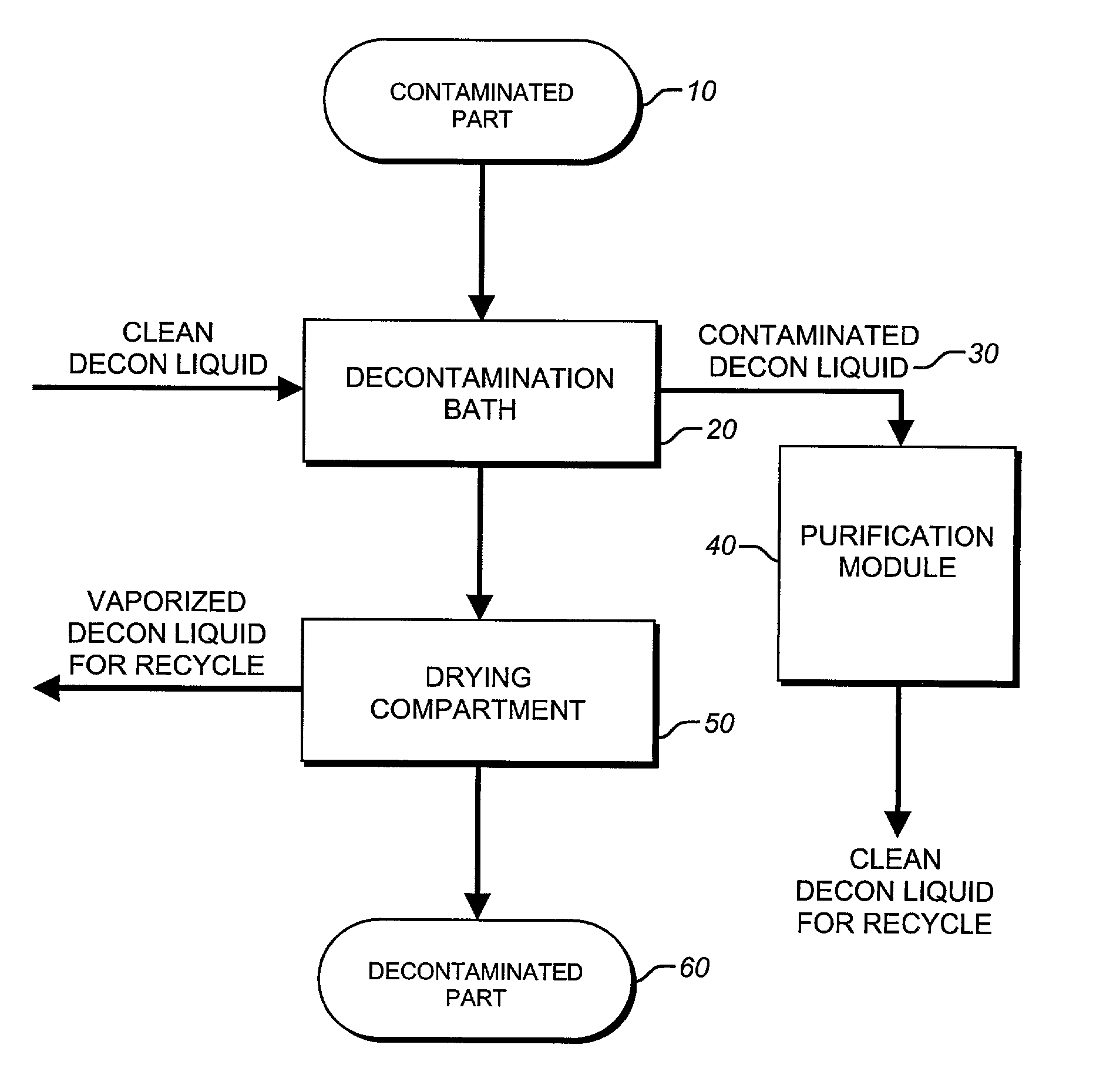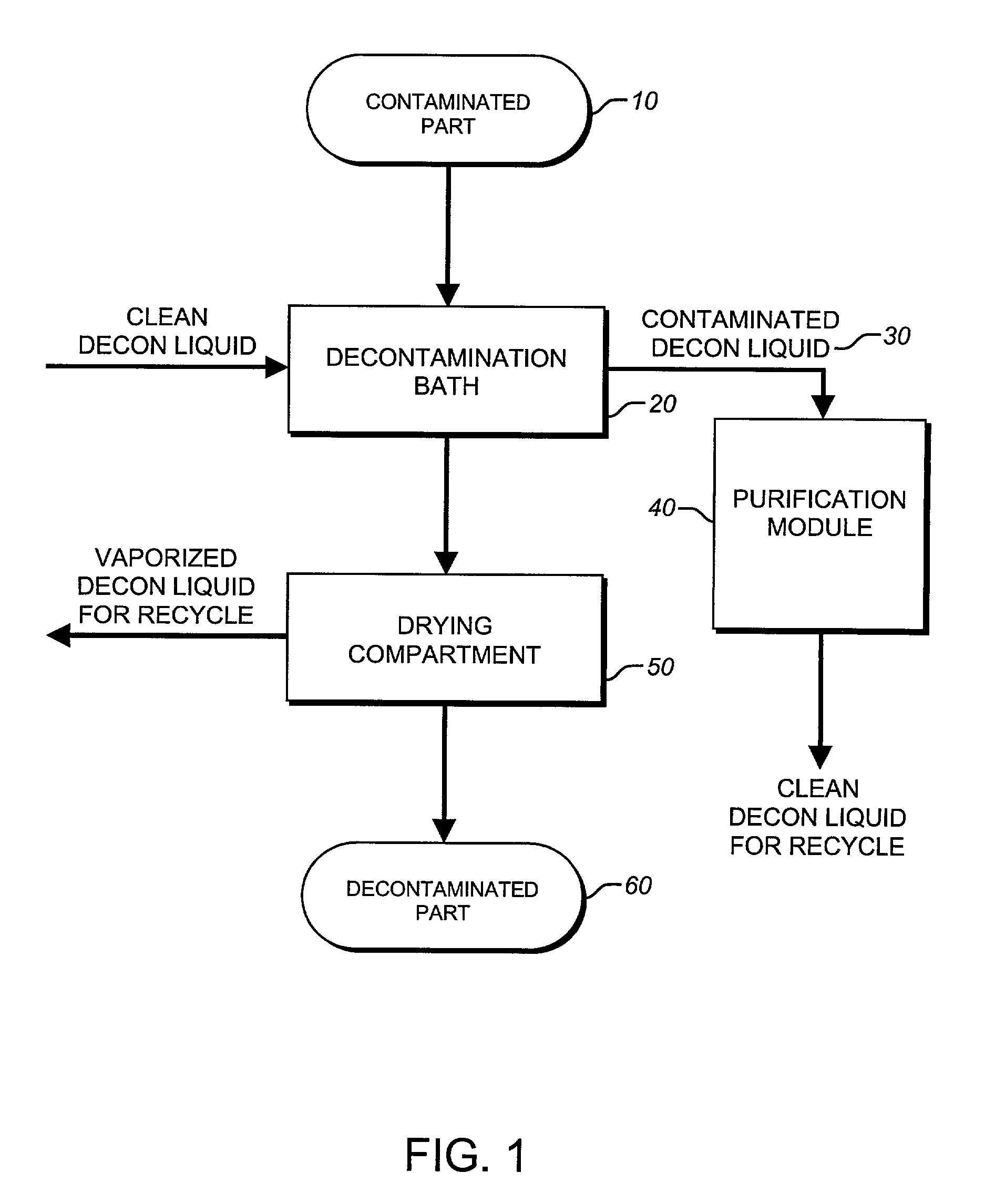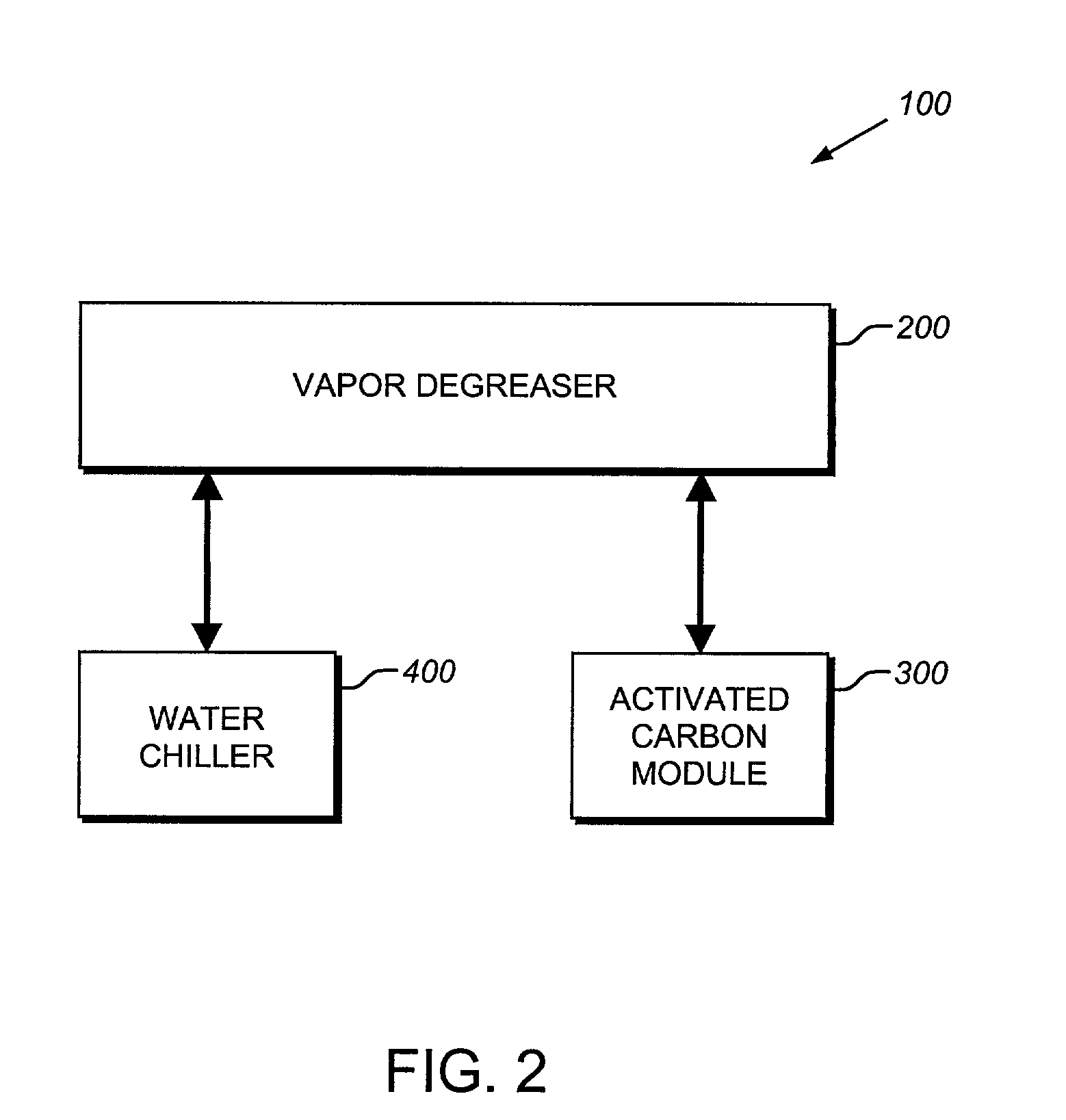Method and apparatus for decontamination of sensitive equipment
a technology for sensitive equipment and decontamination methods, applied in cleaning processes and apparatus, chemistry apparatus and processes, cleaning using liquids, etc., can solve the problems of equipment decontamination, no longer commercially available, additional difficulties, etc., and achieve low toxicity, low cost, and low cost
- Summary
- Abstract
- Description
- Claims
- Application Information
AI Technical Summary
Benefits of technology
Problems solved by technology
Method used
Image
Examples
Embodiment Construction
[0037]The contaminated parts are sprayed with a fluorescent marker and immersed in a bath filled with decontamination liquid. In this bath, surface contaminants are removed from the surface of the parts and transferred to the decontamination liquid, either by solution or by suspension. Contaminated decontamination liquid is withdrawn from the bath and sent to a purification module that removes the dissolved or suspended contaminants from the liquid. The purified liquid is returned to the bath through spray nozzles to further treat the contaminated parts and decontaminate the cleaning chamber.
[0038]The parts remain in the bath until a prescribed cleaning regime is completed or until fluorescence sensors in the fluid circuits can no longer detect the fluorescent marker in the solvent that exits the cleaning chamber. The operator who opens the clean side door can verify that there are no longer any harmful levels of contaminants remaining on the treated parts by visually examining the ...
PUM
| Property | Measurement | Unit |
|---|---|---|
| Fraction | aaaaa | aaaaa |
| Temperature | aaaaa | aaaaa |
| Temperature | aaaaa | aaaaa |
Abstract
Description
Claims
Application Information
 Login to View More
Login to View More - R&D
- Intellectual Property
- Life Sciences
- Materials
- Tech Scout
- Unparalleled Data Quality
- Higher Quality Content
- 60% Fewer Hallucinations
Browse by: Latest US Patents, China's latest patents, Technical Efficacy Thesaurus, Application Domain, Technology Topic, Popular Technical Reports.
© 2025 PatSnap. All rights reserved.Legal|Privacy policy|Modern Slavery Act Transparency Statement|Sitemap|About US| Contact US: help@patsnap.com



